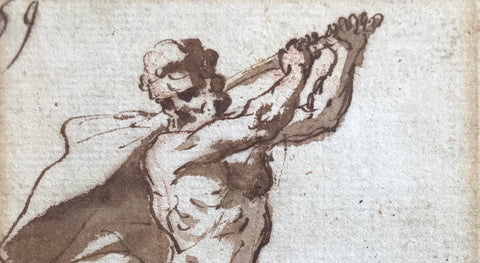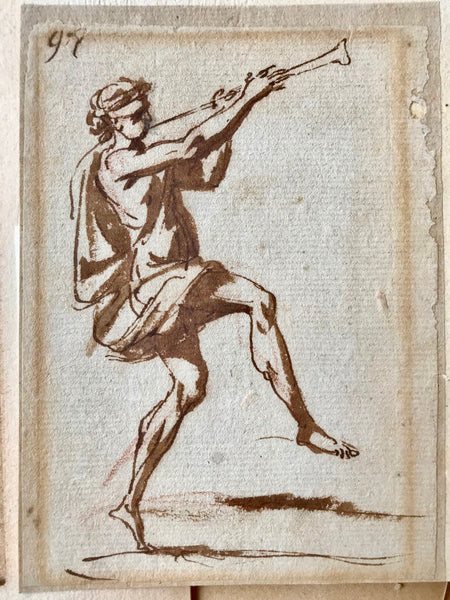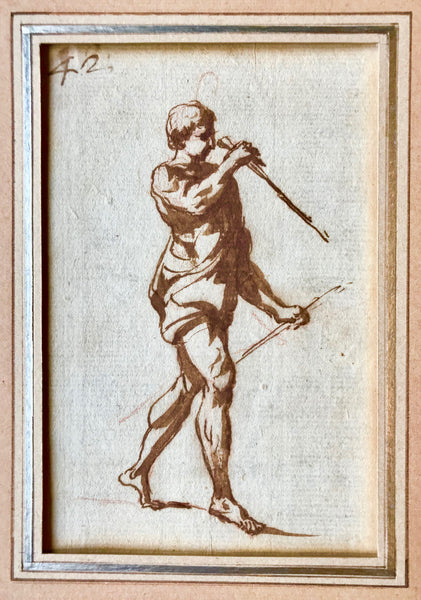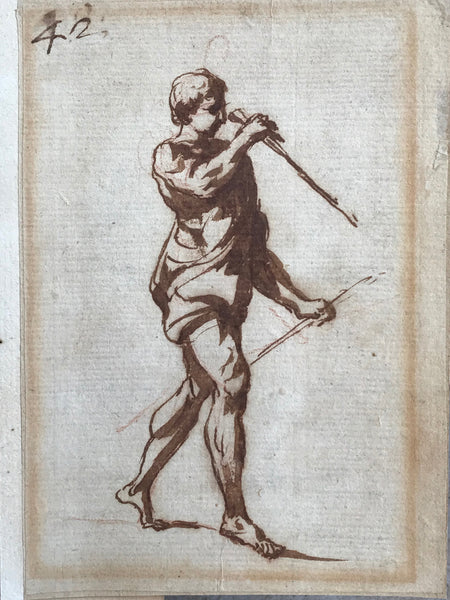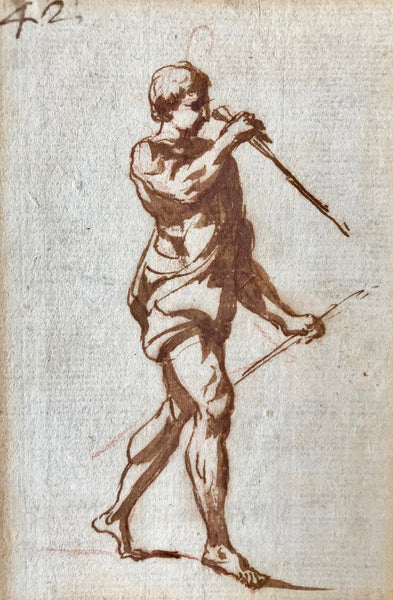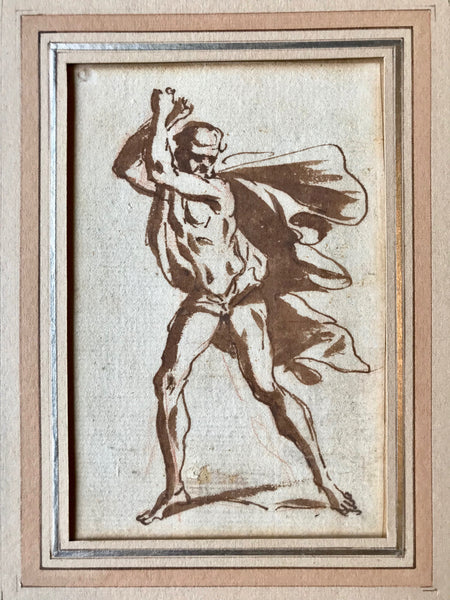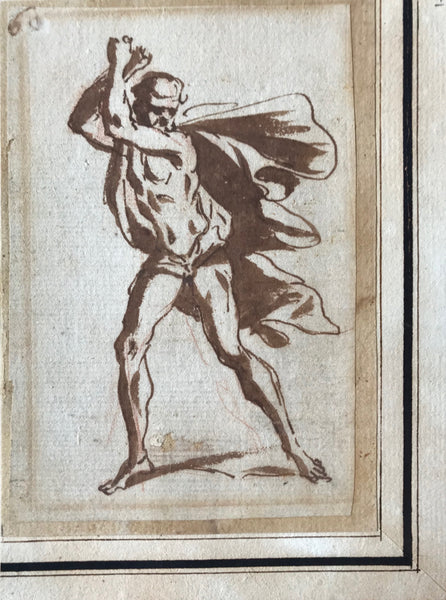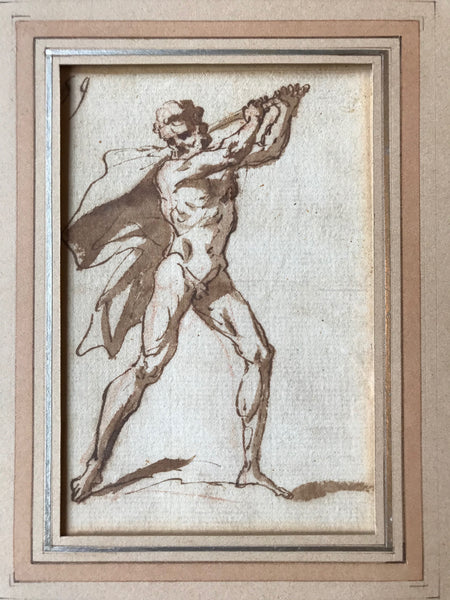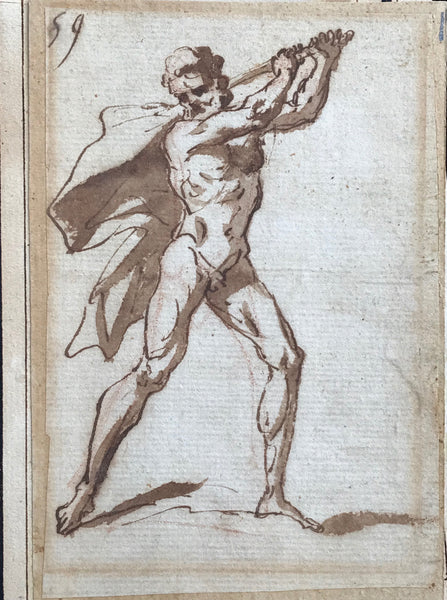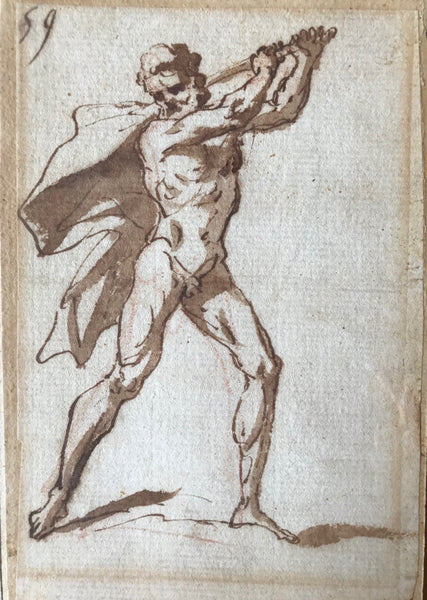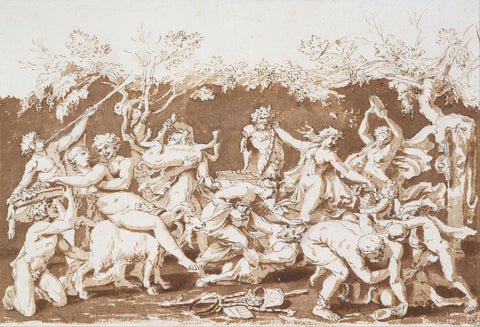Four drawings Nicolas Poussin
Average 130 mm x 90 mm each.
Pen and ink wash, over red chalk
National Gallery
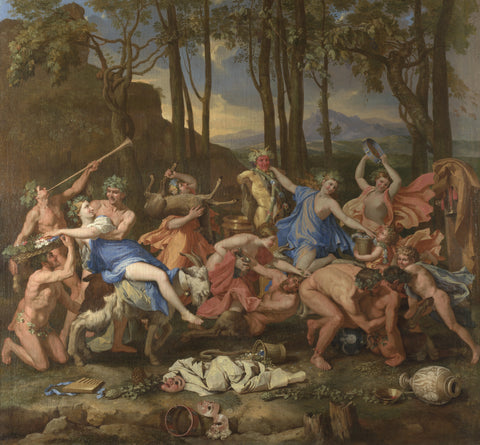 This depiction of a mythical celebration shows nymphs and satyrs revelling before a statue of Pan, the god of woods and fields. Pan’s identity in this work may have been combined with that of Priapus, a deity of gardens. Both are associated with fertility and Bacchic ritual. The painting contains a number of literary and visual references; the instruments being played, the sacrificial deer and the props in the foreground are all either attributes of Pan and Priapus, or are linked with such rites. These include panpipes, theatrical masks (comedy, tragedy and satire), and a shepherd’s staff.
This depiction of a mythical celebration shows nymphs and satyrs revelling before a statue of Pan, the god of woods and fields. Pan’s identity in this work may have been combined with that of Priapus, a deity of gardens. Both are associated with fertility and Bacchic ritual. The painting contains a number of literary and visual references; the instruments being played, the sacrificial deer and the props in the foreground are all either attributes of Pan and Priapus, or are linked with such rites. These include panpipes, theatrical masks (comedy, tragedy and satire), and a shepherd’s staff.This picture was commissioned by Cardinal de Richelieu and dispatched from Rome to Paris in May 1636. With its companion, 'The Triumph of Bacchus' (Kansas City, Nelson-Atkins Museum of Art), it was designed to form part of the decoration of the Cabinet du Roi in the Château de Richelieu. There are a number of preparatory drawings by Poussin for this painting, including some in the collection of H.M. The Queen at Windsor Castle.Bacchanale
NICOLAS POUSSIN (1594-1665)
The Triumph of Pan c.1635
Pen and ink with wash, over black chalk and stylus | 22.8 x 33.8 cm (sheet of paper)
https://www.royalcollection.org.uk/collection/911995/the-triumph-of-pan
Description
Poussin was the greatest classicising painter of the seventeenth century. He was born in Normandy but travelled to Italy at around the age of thirty and, excepting a short and disaffected return to Paris in 1640-41, he spent the rest of his life in Rome. His paintings were mostly executed for private collectors and are replete with scholarly references; avidly sought after by his countrymen, they were instrumental in the development of classicism in France.
The drawing corresponds in its details, though not in its proportions, with one of a pair of Bacchanals painted for the French Minister of State, Cardinal Richelieu, dispatched from Rome in May 1636 and now in the National Gallery, London. The function of the drawing is, however, puzzling. As the painting was destined for a specific setting, Poussin had surely been provided with its required dimensions - almost square - and such a carefully drawn sheet is not a sketch in which the artist can neglect the proportions of the final piece. The provenance of the sheet also rules out the possibility that this was a model sent to Richelieu for his approval. Perhaps the sheet was a by-product of the commission, drawn for one of Poussin’s erudite friends in Rome; it could then in principle have been executed after the painting, though the richness and fluency of the wash would place it close in date.
The drawing corresponds in its details, though not in its proportions, with one of a pair of Bacchanals painted for the French Minister of State, Cardinal Richelieu, dispatched from Rome in May 1636 and now in the National Gallery, London. The function of the drawing is, however, puzzling. As the painting was destined for a specific setting, Poussin had surely been provided with its required dimensions - almost square - and such a carefully drawn sheet is not a sketch in which the artist can neglect the proportions of the final piece. The provenance of the sheet also rules out the possibility that this was a model sent to Richelieu for his approval. Perhaps the sheet was a by-product of the commission, drawn for one of Poussin’s erudite friends in Rome; it could then in principle have been executed after the painting, though the richness and fluency of the wash would place it close in date.
